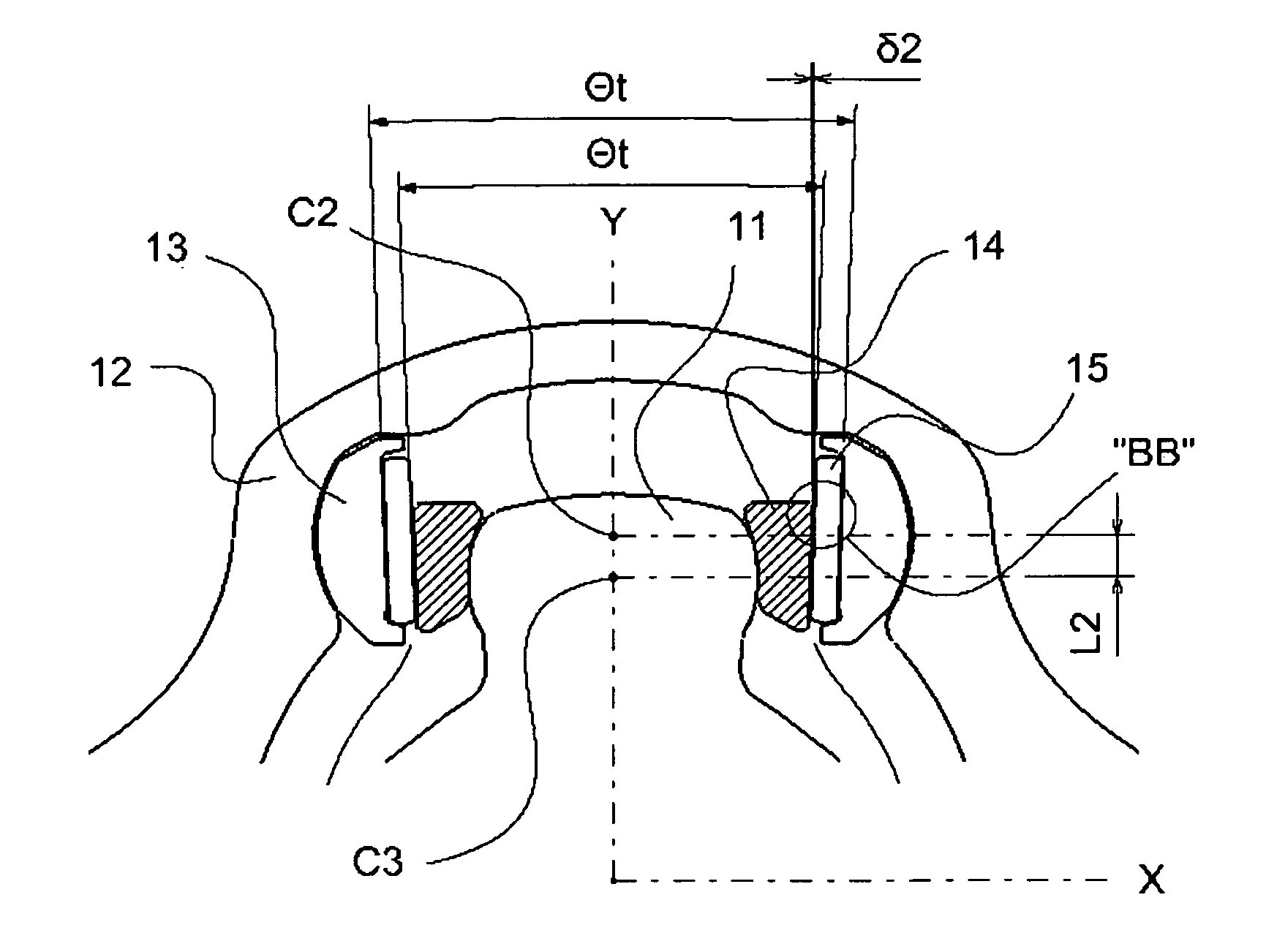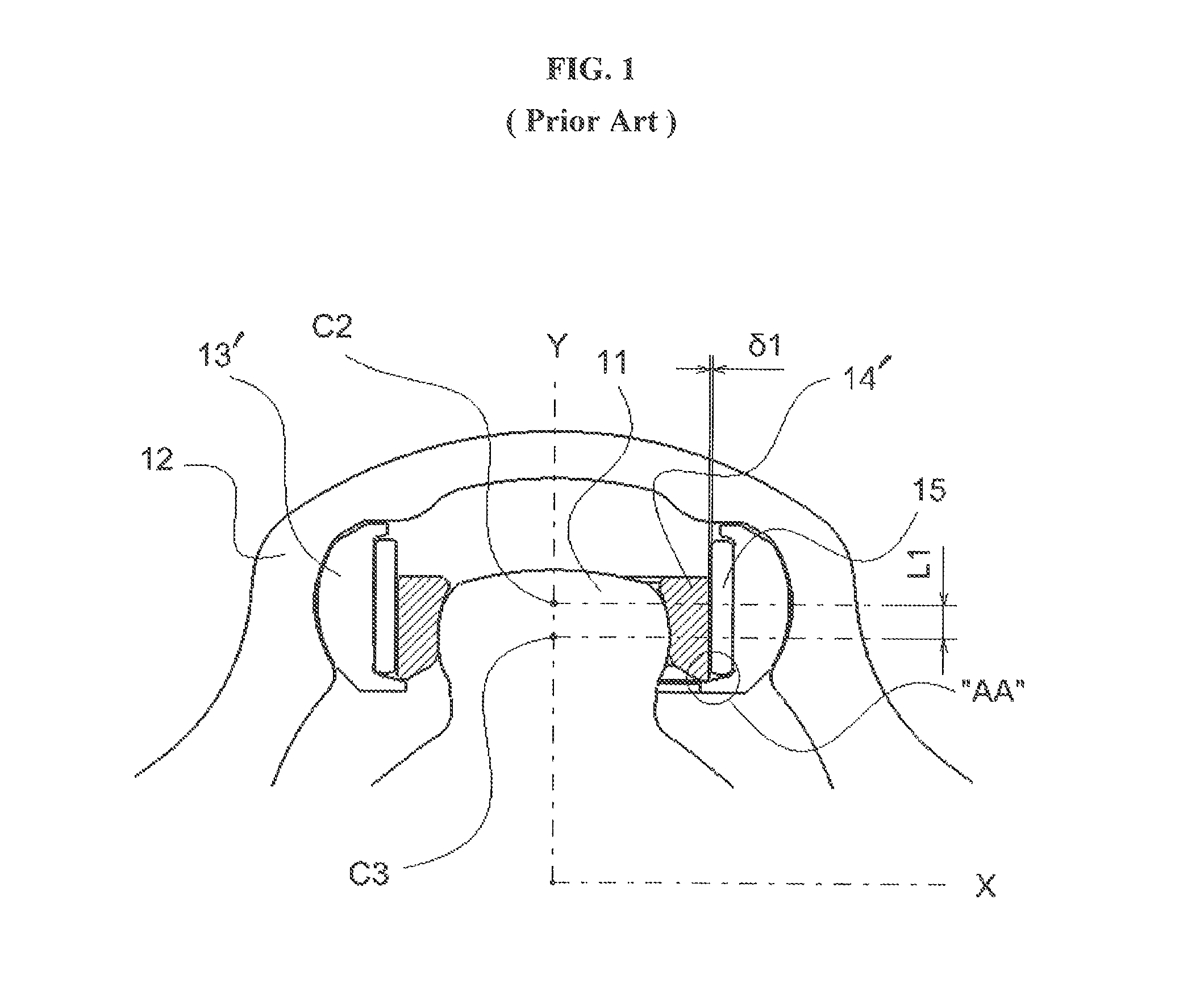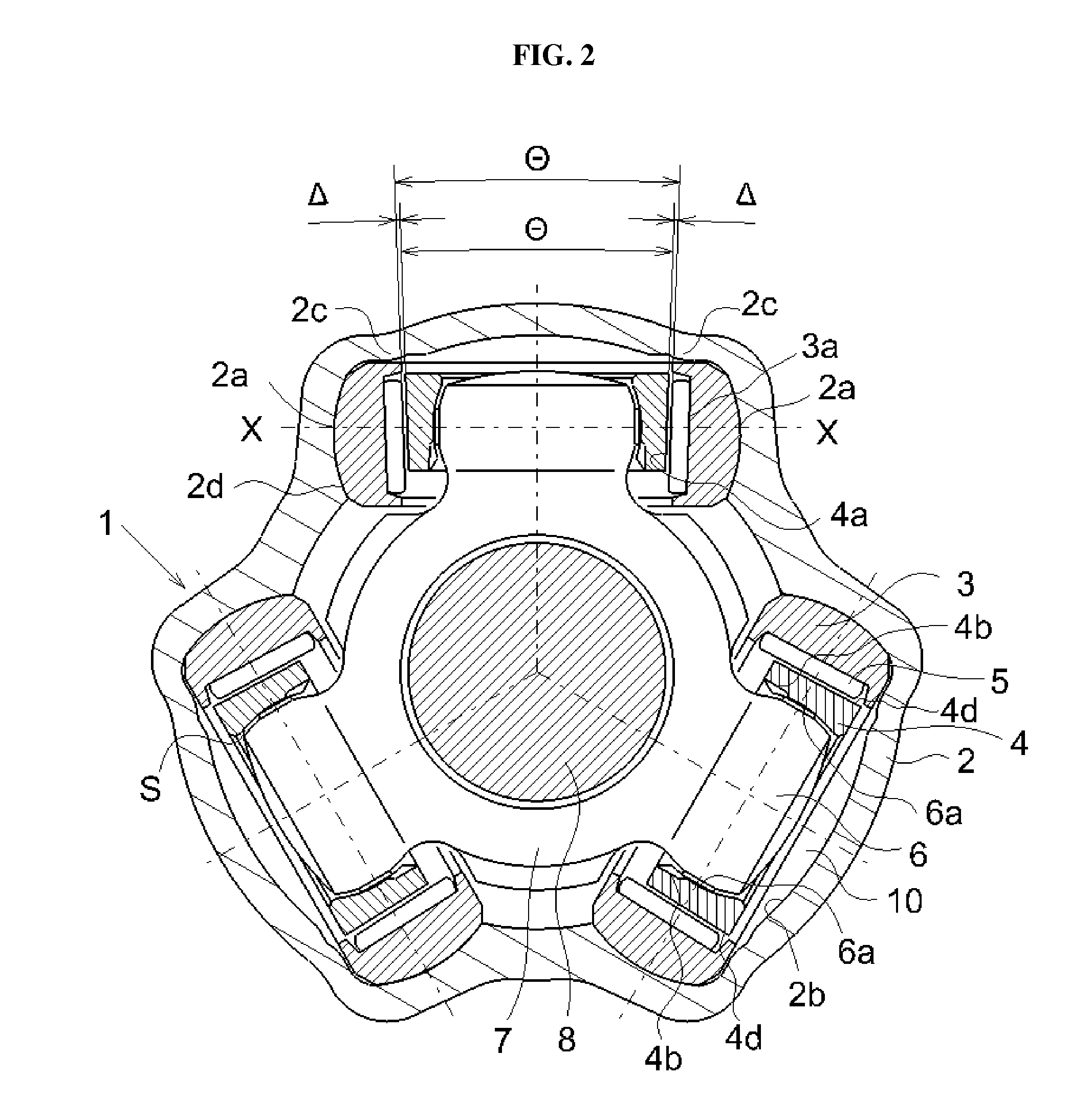Constant velocity joint of tripod type
a constant velocity joint and tripod technology, applied in the direction of shafts, bearings, shafts for rotary movement, etc., can solve the problems of large friction between the faces, increased production costs, and increased production costs, and achieve the effect of reducing conventional shudder or frictional contact problems and sufficient durability
- Summary
- Abstract
- Description
- Claims
- Application Information
AI Technical Summary
Benefits of technology
Problems solved by technology
Method used
Image
Examples
Embodiment Construction
[0042]Referring to the drawings, the tripod type constant velocity joints of the present invention are described herein in further details with several exemplary or preferred embodiments thereof. However, the following descriptions of such embodiments are intended primarily for illustrating the principles and exemplary constructions of the constant velocity joints of the present invention, and the present invention is not specifically limited to these exemplary embodiments. Thus, one skilled in the art can appreciate or recognize that various modifications and substitutions can be made thereto without departing from the spirit and scope of the present invention.
[0043]The present invention is associated with and claims priority over Applicant's previous application Ser. No. 11 / 750,138. Accordingly, the entire contents of this application are incorporated herein by reference, and the detailed descriptions of the constant velocity joints of this application are not repeated herein for ...
PUM
 Login to View More
Login to View More Abstract
Description
Claims
Application Information
 Login to View More
Login to View More - R&D
- Intellectual Property
- Life Sciences
- Materials
- Tech Scout
- Unparalleled Data Quality
- Higher Quality Content
- 60% Fewer Hallucinations
Browse by: Latest US Patents, China's latest patents, Technical Efficacy Thesaurus, Application Domain, Technology Topic, Popular Technical Reports.
© 2025 PatSnap. All rights reserved.Legal|Privacy policy|Modern Slavery Act Transparency Statement|Sitemap|About US| Contact US: help@patsnap.com



